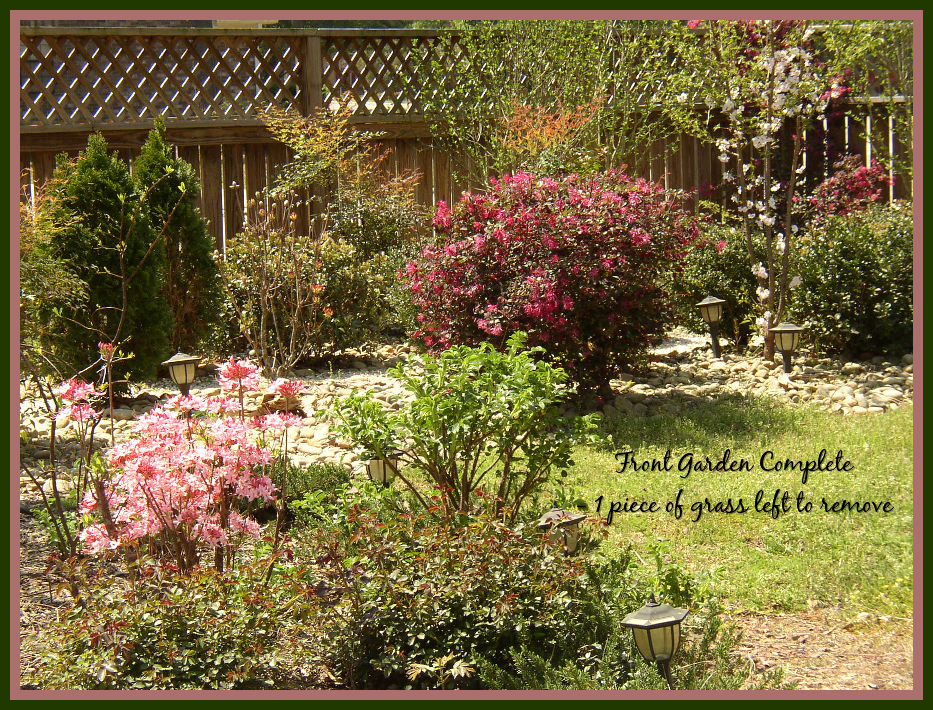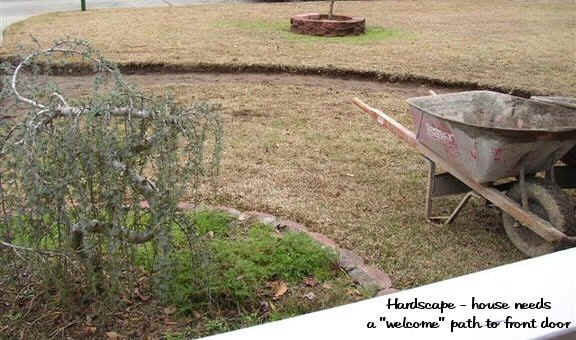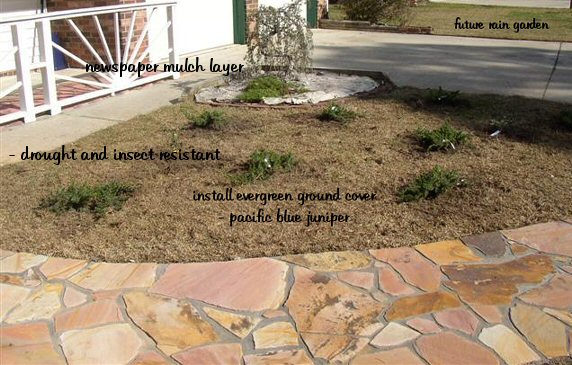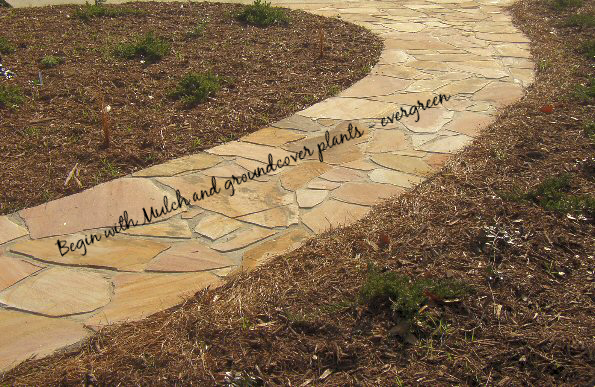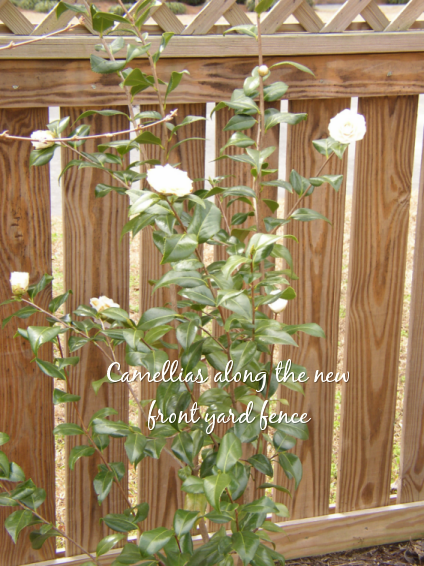|
Although there is no such thing as a maintenance-free landscape, it is possible to have an attractive landscape
that is easy to care for. Good planning, design, plant selection and timely maintenance will reduce the amount
of care that a landscape needs to look its best.
Planning
Planning is essential to the development of a low maintenance landscape. Extra time spent in planning
will be repaid many times over in later leisure time.
Analyze Site: Begin
with a thorough study of the features of your garden site. This will include site
conditions, problem areas, desirable areas and views. Plot these factors on a sketch of your garden site for
future reference.
Determine sun and shade patterns for all areas.
Does the
area receive different light at different times of day or in different seasons? Some plants do well with full
morning sun but cannot handle the hotter afternoon sun.Other plants that can handle full sun in summer are
subject to sunburn in winter. You will also want to locate patios, shade trees and arbors according to sun
patterns.
Evaluate the maintenance needs of existing plants and
structures. Identify the existing plants and determine their condition and future growth. A tree that will
tremendously outgrow its present location may be easier and less expensive to remove and replace now than later.On the other hand, you may have features that are of
unexpected benefit. A solid bed of moss under trees can mean that you will never need to mow that area.
Check soil drainage and storm runoff. Areas that stay
wet can be lethal to many plants, and damaging to structures. Either regrade or install drain tiles to
improve drainage, or plant that area only with water-tolerant plants.
Note: Design A
Rain Garden in that wet area. You can have a xeriscape and
rain garden within the same design. Kind of mind-blowing...
The type of soil in your yard will also affect drainage
rates and the types of plants that will thrive. A soil test will determine if soil amendments or fertilizers are
needed.
Identify areas such as steep slopes that may cause
maintenance difficulties. Lawns on steep slopes can be both high-maintenance and unsafe. Plan to replace the
grass with groundcover or use terraces and retaining walls to reduce severe slope problems.
Analyze Your Needs: Determine
what your needs and desires are for your yard. Families with young children will need play areas that are safe and easily
watched. Plan your landscape around the kind of activities that
you and your family engage in. Outdoor sports and yard games require a lot of lawn space and sturdy plantings.
Large paved areas are desirable for outside
entertaining. Remember the needs of outdoor pets. Dogs can severely
damage gardens unless they are confined to a separate area.
Consider the amount of time that you can afford or want
to spend in yard maintenance. New gardeners should start with easier plantings than an experienced gardener
would put in. Start small and simple until you know how much you like gardening.
Many people enjoy some aspects of garden care and
dislike others. If you dislike spending time watering, choose only drought-tolerant plants or install an
irrigation system. Those who hate to rake can choose
trees with fine leaves that disappear into a lawn.
Take into account the physical abilities of the users and
their ability to perform different maintenance jobs. Wheelchair access requires wide paths without
overlapping plants. Raised beds are helpful for gardeners who have difficulty kneeling.
You will also need to allow room for such practical
purposes as clotheslines, trashcan storage, compost and pet runs.
Designing
Your Landscape For Low Maintenance
Download
this design plan free

Many of the maintenance needs of a garden are
determined by the design. By following a few simple
guidelines, you can build in ease of care from the start.
Simplicity: Keep
the planting design simple. Make certain each plant in the plan serves a purpose.
Elaborate plantings require a great deal of attention. Simple plantings, using only a few plant species, can be
both attractive and easy to manage.
Materials Selection: Some
elements of a landscape need more care than others. Generally, paving such as patios and walks require the least care. They are
followed by structures such as sheds and arbors, then trees, shrubs, ground covers, and lawns. Bulbs, annual
and perennial flowers, and plants that need special care, such as roses, need the most maintenance. Since few of
us would want a garden without any seasonal flowering plants, the maintenance impact can be reduced by
planting high-care plants in limited numbers and where they will have the most impact.
Beds: Planting
beds are easier to maintain than many isolated plantings. It is easier to mow around a bed with
a continuous edge rather than around individual plants. Gentle curves or straight lines are both easier to care for
and more pleasing than complicated curves and shapes. Avoid sharp corners or narrow strips that mowers cannot
reach. Beds should be narrow enough for easy access, or be designed with steppingstones or paths through them.
Edging: Edging
saves maintenance by keeping mulch in and lawn out. Steel, aluminum and plastic edgings are
readily available. A very attractive edging can be constructed of pavers or brick laid flush with the lawn.
This kind of edging will reduce the need for hand-trimming. While a spade cut edging will need to be
re-cut seasonally, it will keep bed edges defined and neat.
Hardscaping: Patios
and decks are low-maintenance choices for high traffic areas that will not allow the
successful growth of grass or other groundcover. Sidewalks, patios and edging around beds should be low
and flat, permitting a power mower to ride up over the surface and eliminating the need for hand-edging.
*I don't do grass, so this doesn't apply to me.
Natural Areas: Some
areas, especially on properties with large trees, can be allowed to return to their natural
state. Woodlands are the natural condition for most areas of the state. This option will require periodic care
to remove weeds.
Wildflower meadows require little supplemental
irrigation once established, and generally do not require fertilization. They are an attractive alternative to the
traditional lawn since they need mowing only once a year. This operation controls the growth of tree and
shrub seedlings, and if done in the fall, helps to spread the wildflower seeds throughout the area.
Establishing a meadow garden will require effort
initially to control weeds until the young plants or seeds are well-established. While a meadow garden need not
be weed-free to be attractive, it will require occasional maintenance to control vigorous or invasive weeds.
The success of a wildflower species or mixture depends
on the adaptability of the species to a given area. Be sure to choose mixes that are suited to your area. High-moisture plants should be limited and
located where they can be reached easily with a hose. **I run drip irrigator hoses
under mulches.
My Notes:
By using decks and patios, groundcovers and shrub beds, you can
limit lawn size and still have an attractive yard. Or you can do as i do. Remove
the lawn altogether, Creating a large landscape with hardscaping and mulches
between beds, or plant an entire clover lawn. Clover is short, beautiful, and
amazingly fragrant. You'll still have to mow once in a while, but Dutch White
Clover grows only about 3 inches tall. Which is the height i like. Walking on
cool clover lawns is a treat. Not pokey like grasses. Soft and smells great.
Plants Suitable For Xeriscaping
The plants i name
below are plants i have
successfully used in my xeriscapes in US zones 5/6 and 8
My
favorite foliage plants for a xeriscape...
Dwarf Yucca
"Color
Guard"
Grows 2-3 feet tall and wide
zones 4-10 Evergreen
No garden is complete without
varying shapes and foliage color. And some evergreen. I love the look
and sword shape of Yucca. There aren't many varieties of manageable size
that make it through a northeast winter, but this is one of them.
Perfect
for xeriscaped water-wise gardens and desertscapes. It's a variety of
succulent, so water needs are minimal. Yucca has average to low water
needs, and likes a well-drained soil.
Propagate by dividing the plant. I use
these as a centerpiece, specimen, or backdrop. I also use these as a
backdrop for my cactus and succulent garden beds.
A very pretty green and yellow,
with swordlike leaves. Perfect for the center or backdrops of my Asian
gardens. Looks pretty planted in pots anywhere. Gives interest and more
impact in areas where you are growing bamboo or Japanese maples.
"Elijah
Blue" Fescue Ornamental Grass (festucca)
Blue green grass that grows into a 12 inch or so feathery ball
shape. Very pretty and evergreen. Needs no maintenance.
|
![]()


